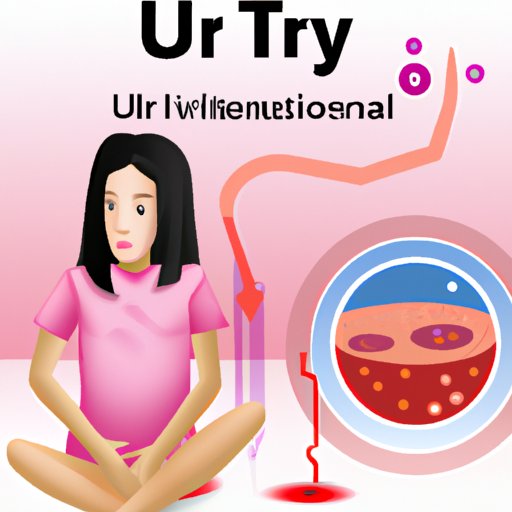Introduction
A urinary tract infection (UTI) is an infection that occurs anywhere in the urinary system, including the bladder, kidneys, ureters, and urethra. UTIs are more common in women than in men, as women have shorter urethras, making it easier for bacteria to enter the bladder. Though anyone can get a UTI, it is important to understand the causes and symptoms so they can be treated quickly and effectively.

Causes of Urinary Tract Infections in Women
There are several possible causes of UTIs in women. The most common cause is an imbalance of bacteria in the bladder or urethra. This can occur when certain types of bacteria, such as E. coli, enter the bladder through the urethra. Other possible causes include sexually transmitted diseases, poor hygiene, and the use of catheters.
Symptoms of a UTI in Women
The most common symptom of a UTI in women is painful urination. Other symptoms may include cloudy urine, frequent urination, lower abdominal pain, and foul-smelling urine. If the infection spreads to the kidneys, additional symptoms such as fever, nausea, and back pain may be present.
How to Treat a UTI in Women
Treatment for a UTI in women typically involves antibiotics. Depending on the severity of the infection, the doctor may prescribe oral antibiotics or intravenous antibiotics. In some cases, the doctor may recommend home remedies to help relieve symptoms, such as drinking plenty of fluids, taking vitamin C, and applying heat to the lower abdomen.

How to Prevent UTIs in Women
To reduce the risk of getting a UTI in women, it is important to practice good hygiene. This includes wiping from front to back after using the bathroom, urinating after sex, and drinking plenty of water. Additionally, avoiding douching or using feminine hygiene products can help reduce the risk of infection.
Diagnosis of UTIs in Women
A UTI in women can usually be diagnosed with a physical exam and a urine sample. During the physical exam, the doctor will look for signs and symptoms of a UTI, such as pain or discomfort in the lower abdomen. The urine sample will be tested for bacteria and other substances that could indicate a UTI.

Home Remedies for UTIs in Women
In addition to antibiotics, there are several home remedies that can help relieve the symptoms of a UTI in women. These include drinking cranberry juice, drinking plenty of fluids, taking vitamin C supplements, and applying heat to the lower abdomen. However, these remedies should not be used in place of antibiotics, as they cannot cure the infection.

Complications of UTIs in Women
If left untreated, a UTI in women can lead to serious complications, such as kidney damage, recurrent infections, and even sepsis. It is important to seek medical attention if you experience any of the symptoms of a UTI, as early treatment can help prevent these complications.
Conclusion
Urinary tract infections are common in women, but they can be prevented and treated if caught early. It is important to understand the causes and symptoms of a UTI in women in order to take steps to prevent it and seek treatment if necessary. By practicing good hygiene and seeking medical attention if symptoms arise, women can reduce their risk of developing a UTI.
(Note: Is this article not meeting your expectations? Do you have knowledge or insights to share? Unlock new opportunities and expand your reach by joining our authors team. Click Registration to join us and share your expertise with our readers.)
